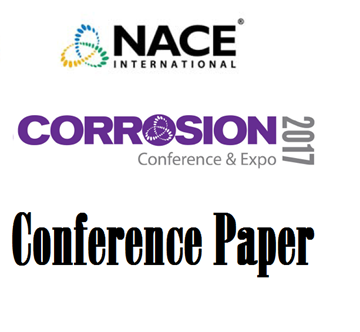Search
Individual Conference Papers
View as
Sort by
Display
per page
Interaction of a Faulty AC Power Conditioning Capacitor Bank with Welded Steel Pipeline
Product Number:
51321-16221-SG
Publication Date:
2021
$20.00
Interfacial and Corrosion Characterization of Zinc Rich-Epoxy Primers with Carbon Nanotubes Exposed to Marine Bacteria
Product Number:
51317--9465-SG
ISBN:
9465 2017 CP
Publication Date:
2017
$20.00
Interference Study between a Solar Array Power Station and a Transmission Pipeline
Product Number:
51324-21051-SG
Publication Date:
2024
$40.00
Intergranular Oxidation and Oxygen Transport in Ni-20Cr During Exposure to Model Dry and Wet Oxidation Environments
Product Number:
ED22-17329-SG
Publication Date:
2022
$20.00
Intergranular Oxidation Of Unstressed Alloy 600 SA And Alloy 600TT In PWR Primary Water
Product Number:
ED22-17279-SG
Publication Date:
2022
$20.00
Intergranular Stress Corrosion Cracking (IGSCC) of Carbon Steel Equipment
Product Number:
51323-19173-SG
Publication Date:
2023
$20.00
Internal Corrosion in Natural Gas Pipelines
Product Number:
51323-19507-SG
Publication Date:
2023
$20.00
Internal Corrosion of Copper-Nickel Alloys Tubes 90/10 and 70/30 in Chlorinated Seawater for Heat Exchangers
Product Number:
51319-13338-SG
Publication Date:
2019
$20.00
Internal Corrosion of Flare Header - A Case Study
Product Number:
51324-21201-SG
Publication Date:
2024
$40.00
Internal Corrosion of L80 Tubing in Permian Basin Oil and Gas Wells-Case Studies (Lab Study)
Product Number:
51323-18892-SG
Publication Date:
2023
$20.00
Internal Corrosion Prevention During Hydrostatic Testing and Wet Layup of Pipelines: Approach and Case Study
Product Number:
51324-20594-SG
Publication Date:
2024
$40.00
Internal Corrosion Risk Assessment for Crude Pipeline-D - A Case Study
Product Number:
MECC23-19965-SG
Publication Date:
2023
$20.00












